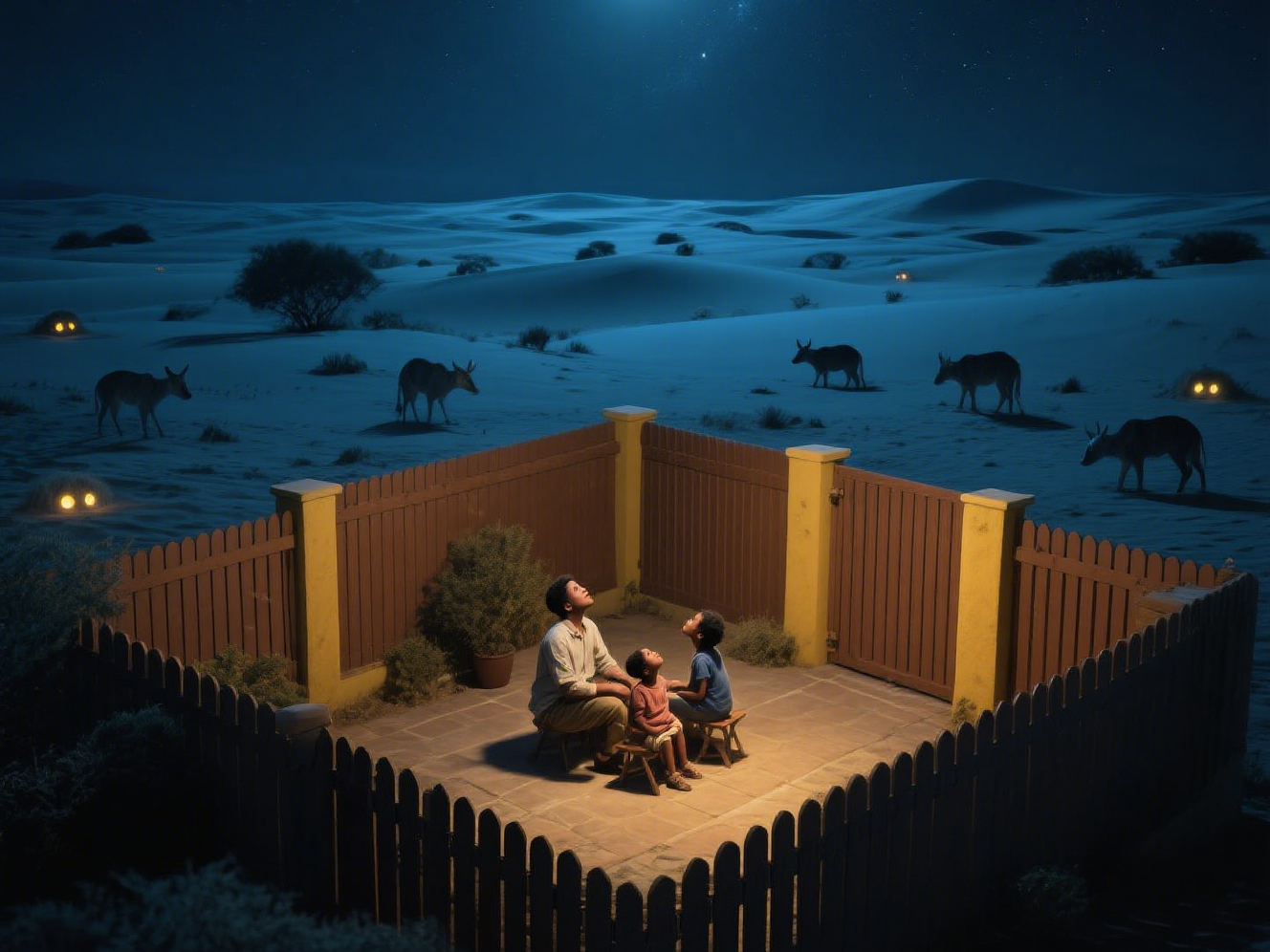On the vast African savannah, extreme day-night temperature differences, frequent sandstorms, and potential wildlife threats pose unique challenges for courtyard fences. Traditional materials struggle to balance protection and durability, but PVC fences are quietly transforming savannah villages with innovative solutions. The Kip family in Maasai Mara, Kenya, and the Kumalo family in Kalahari, South Africa, witness this transformation.
Maasai Mara, Kenya: A Sturdy Fortress Against Sandstorms and Wildlife
The Kip family lives in a nomadic village in Maasai Mara, where daytime temperatures reach 40°C and drop to below 10°C at night, causing common fencing materials to crack. The dry season brings fierce sandstorms, with howling winds carrying gravel that wears down fences. Worse, wild animals like hyenas and baboons often damage traditional wooden fences. Kip’s fence was repeatedly destroyed by wildlife, threatening crops and livestock.
To solve these issues, Kip installed a PVC fence: a 2.5-meter-high tan model with rock-textured surfaces, blending into the savannah for camouflage. The thickened design offered excellent impact resistance, withstanding wildlife collisions; special UV-resistant formulas prevented deformation and fading under prolonged sun exposure. The sturdy PVC fence now encircles Kip’s courtyard, where they’ve planted corn and vegetables and built livestock sheds. Children play safely, free from wildlife intrusion, significantly improving the family’s quality of life.

Kalahari, South Africa: An Ecological Barrier Adapting to Temperature Differences and Drought
The Kumalo family lives on the edge of the Kalahari Desert in South Africa, with minimal annual rainfall, arid climate, and day-night temperature differences of up to 30°C. Their previous adobe fence cracked and peeled in extreme temperatures, eroded by sparse rainfall during the rainy season, incurring high maintenance costs.
Recommended by a local cooperative, the Kumalos installed a PVC fence with a hollow double-layer structure to buffer temperature changes, preventing damage from thermal expansion and contraction; the anti-crack coating kept it intact in severe drought. The 2-meter-high fence, designed in tree-trunk brown, merged with the desert landscape. Post-installation, it not only solved protection issues but also enabled the Kumalos to build a rainwater collection system and plant desert-adapted succulents and acacia trees. Their fenced courtyard has become a rare green haven in the Kalahari, inspiring neighbors to follow suit.

In Africa’s unique savannah environment, PVC fences serve as reliable partners for village families, combining strong environmental adaptability with protective functions. They safeguard livelihoods while blending seamlessly with nature, adding a modern, ecological touch to the African savannah.
